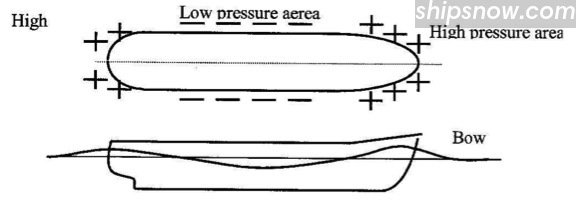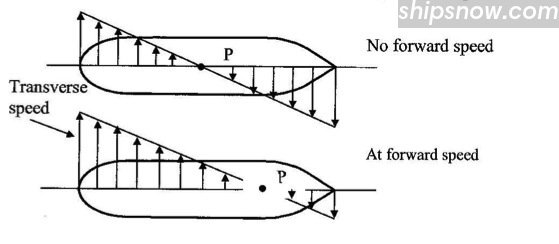Basics of Ship Handling
Ship handling basics for masters and mates.
Ship’s Body and Forces Acting


Forces Acting on the Manoeuvring Ship

Pivot Point

With no forward speed and at steady rotational motion, when bow and stern swing in opposite directions the Pivot Point is located within the ship (often close to the midship).
When the ship is making headway, the Pivot Point moves forward. When the ship is making sternway, the Pivot Point moves aft.

Below picture shows how the Pivot Point position depends on block coefficient (slender ship vs full bodied ship).

Rudder Force & its Effect

Transverse Trust of the Propeller
Ahead - Higher pressure on the port side transverse thrust causes small swing to port hardly noticeable.
Astern - Higher pressure on the starboard side much more significant transverse thrust causes swing to starboard.





Wedge Effect While Running Astern

Effect of Thruster Forces


The effectiveness of thruster depends on whether the ship is moving ahead or astern.

Rudder & Thruster Action




Effect of Tug Forces



Forces Acting on the Ship When Turning
